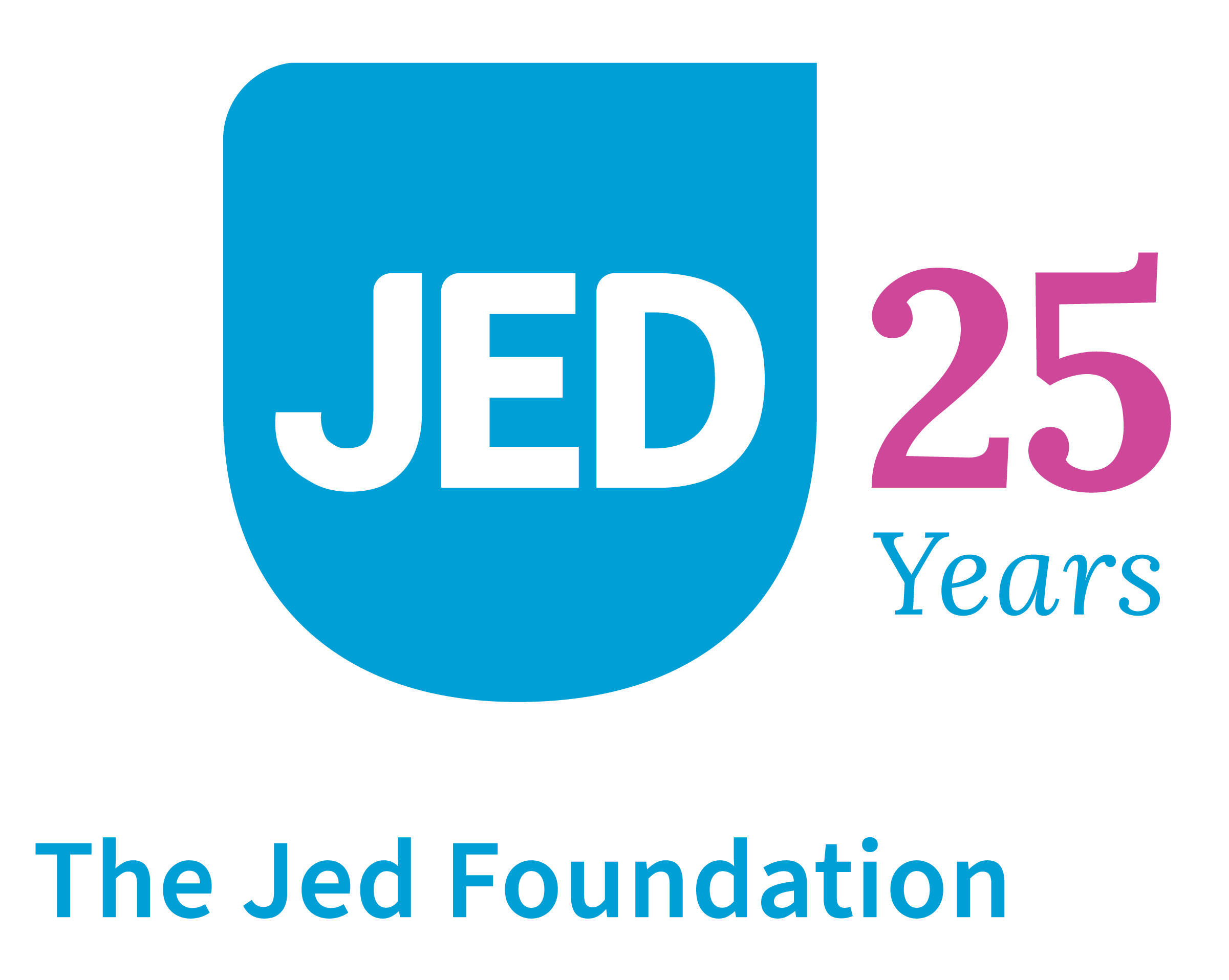In order to connect young people with the resources they need to protect their mental health, it’s important to understand how they typically find and process information. For example, rather than getting all of their facts from credentialed experts or established outlets, many young people absorb and trust information from social media, their peer groups, and leading voices in their communities.
This may be especially true for topics related to mental health. That’s because people seek out familiar spaces and trusted friends to raise vulnerable topics and pursue in-depth conversations.
The Jed Foundation (JED) has seen how effective it is when regular people, influential icons, and even celebrities initiate conversations about mental health with teens and young adults. We know that all content creators, from professional journalists to TikTokers, have the ability to influence how mental health is perceived, what conversations are taking place, and what information is widely shared. Online influencers have the voice, platform, and opportunity to reach young people and improve their overall awareness about mental health warning signs, resources, and treatment options. Therefore, we believe that they should continue to do so—responsibly.
It’s not enough just to talk about mental health; it also matters how these stories are told. If they’re told in ways that are unsafe or stigmatizing, they have the potential to cause harm. Unfortunately, young people with existing mental health challenges are especially susceptible to influence, so it’s important to discuss mental health in a way that encourages help-seeking behavior, preserves the dignity of those living with mental health issues, and reduces harmful outcomes.
Here are a few tips for safe, effective storytelling around issues of mental health:
- Avoid language that stigmatizes mental illness or substance misuse. If the person had a mental health condition or a substance use disorder, do not use terms such as “disturbed,” “crazy,” or “addict.” Avoid using phrases such as “John was schizophrenic” or “Jane was an alcoholic,” as this type of language defines a person by their condition. Instead, focus on symptoms and warning signs. Accurate, informative descriptions can help people notice warning signs in themselves or others. For example, “John was struggling with symptoms of a serious mental illness” or “Jane was working to recover from an addiction to alcohol.”
- Include helplines on content related to mental health. Make sure that your audience knows how to easily connect with a counselor if they are upset by the topic you’re discussing. We recommend the following: Text START to 741-741 or call 1-800-273-TALK.
Mainstream media coverage of mental illness tends to focus on factors such as crime and violence, and major outlets tend to report on celebrity deaths by suicide. This can have a harmful effect on news consumers. “Suicide contagion” can occur when a death by suicide is either sensationalized (in the case of a celebrity death) or normalized (discussed as if it were an expected outcome for a person with a diagnosed mental illness or with a history of substance misuse). When the method of suicide is highlighted, this can also inspire “copycat suicides.”
However, independent content creators can have more nuanced, safe, and sensitive conversations while sharing information about how to seek help and prevent suicide. Notably, citizen journalism by people with mental illness has the potential to educate the public and reduce stigma. The level of detail that’s included, the language that’s used, and how the loss of life is treated can all have a direct impact on the audience’s perception of suicide and can even help prevent it.
Here are our recommendations for safe language when discussing suicide:
- Do not use the phrase “committed suicide.” This language is outdated and is a reference to suicide as a criminal act. Instead, use factual language about the cause of death. For example, “died by suicide.”
- Avoid using language that treats suicide as a “success.” This language suggests that suicide is something to be achieved. Conversely, it can contribute to the idea that not acting on suicidal ideations—or surviving a suicide attempt—is a “failure.” Instead, use neutral language. Use phrases such as “suicide attempt survivor” or “lost to death by suicide.”
Find more guidelines here.
As an influencer or content creator, look for opportunities to expand depictions of mental health and treatment to reflect the full continuum:
- Discuss mental health as part of overall health. Normalize taking care of mental health the same way you’d take care of your physical health.
- Find ways to make mental health challenges relatable and universal, even if you are telling a story that involves a person living with a diagnosed condition or experiencing extreme circumstances.
- Help your audience understand that treatment, coping strategies, and self-care can benefit anyone, at any time. Mental health professionals are trained to assist clients with a wide range of more common problems like relationship issues and work stress. They can help teens and young adults proactively strengthen their mental health through coping skills and lifestyle changes.
Promoting mental health support and self-care through storytelling can encourage young people to get help, improve their quality of life, and even prevent suicide.
The Mental Health Media Guide was designed to help content creators achieve those goals. It was created by a coalition of mental health experts, partner organizations like JED, and professionals across a range of media and entertainment companies, with the goal of providing evidence-based recommendations to support storytellers across platforms, mediums, and experience levels. Additionally, it discusses the need to represent diverse communities and expand portrayals of mental health experiences.
The Jed Foundation encourages media producers and online influencers to continue creating content and hosting conversations related to mental health and suicide; we also strongly encourage them to set aside time to learn best practices for safely and responsibly sharing these stories.






